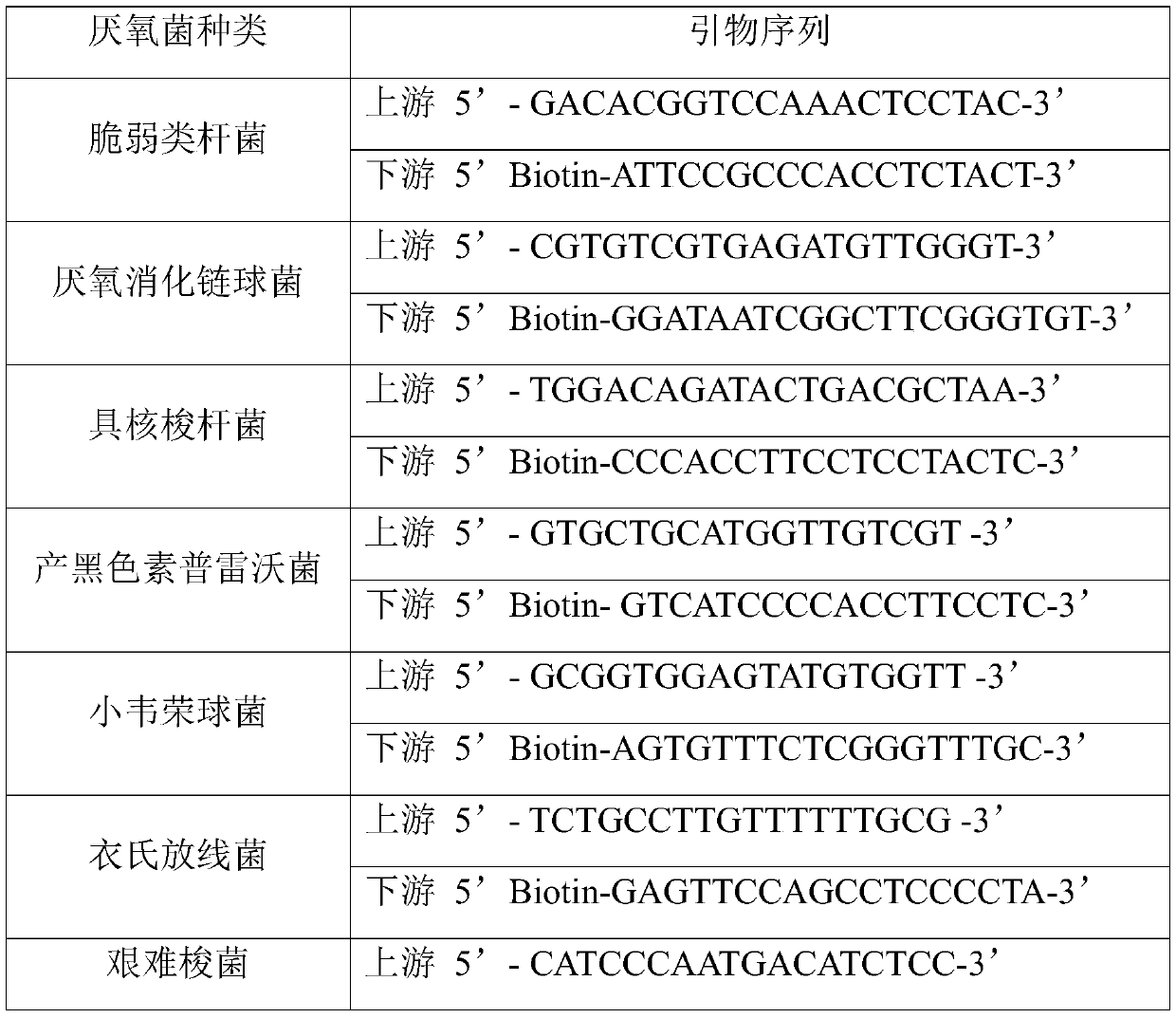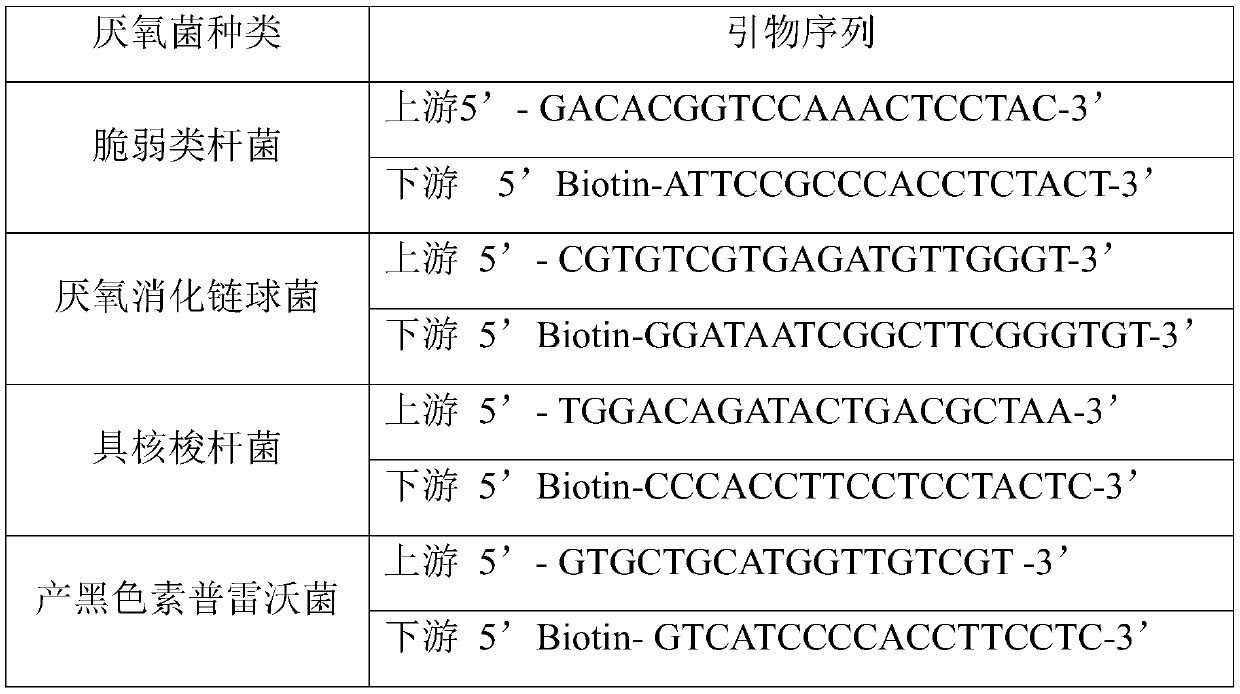Anaerobe liquid-phase chip inspection method
A liquid-phase chip detection and chip detection technology, applied in the field of detection, can solve the problems of inability to meet the needs of early clinical, sensitive and specific diagnosis, time-consuming isolation and identification of bacterial species, and low detection rate, etc. The effect of treatment, reducing medical expenses, reducing medical expenses
- Summary
- Abstract
- Description
- Claims
- Application Information
AI Technical Summary
Problems solved by technology
Method used
Image
Examples
Embodiment 1
[0051] A liquid phase chip detection method for anaerobic bacteria, comprising the following steps:
[0052] Step A: Design primers and probes;
[0053] Step B: establishment of multiple RT-PCR reaction system;
[0054] Step C: establishment of a liquid phase chip detection system;
[0055] Step D: Detection.
[0056] In the step A, the specific steps of designing primers are as follows: select the specific sequence of the 16S rDNA gene of nine kinds of anaerobic bacteria to design the upstream and downstream primers of various bacteria, the 5' end of the downstream primer is modified with biotin, and the nine kinds of anaerobic bacteria The primer sequences of bacteria are as follows:
[0057]
[0058]
[0059] In the step A, the specific steps of designing the probe are as follows: find out the specific sequence within the species by comparison and design the probe as the specific region for screening, and modify the 5' end with amino and C12 during synthesis, and u...
Embodiment 2
[0090] This embodiment is to analyze and verify the specificity, sensitivity and repeatability of the liquid chip of the above-mentioned embodiment 1:
[0091] 1. Specificity evaluation: 9 kinds of anaerobic bacteria were detected to ensure that the species would not cross each other, and each probe on the chip was evaluated for specificity. The fluorescent signal values of specificity detection are shown in Table 3.
[0092] Table 3. Specific detection fluorescence signal value (MFI) of each strain
[0093]
[0094]
[0095] 2. Sensitivity analysis: measure the genome concentration of each bacteria by ultraviolet spectrophotometer, and dilute to 100ng / μL, 10ng / μL, 1ng / μL, 100pg / μL, 10pg / μL, 1pg / μL, 100fg / μL, 10fg / μL, 1fg / μL, PCR amplification of the genome, chip hybridization, and detection on the machine. Among them, the detection sensitivity of Bacteroides fragilis, Fusobacterium nucleatum, Veillonella parvum, Actinomyces clostrii, Clostridium perfringens, Porphyr...
PUM
 Login to View More
Login to View More Abstract
Description
Claims
Application Information
 Login to View More
Login to View More - R&D
- Intellectual Property
- Life Sciences
- Materials
- Tech Scout
- Unparalleled Data Quality
- Higher Quality Content
- 60% Fewer Hallucinations
Browse by: Latest US Patents, China's latest patents, Technical Efficacy Thesaurus, Application Domain, Technology Topic, Popular Technical Reports.
© 2025 PatSnap. All rights reserved.Legal|Privacy policy|Modern Slavery Act Transparency Statement|Sitemap|About US| Contact US: help@patsnap.com



